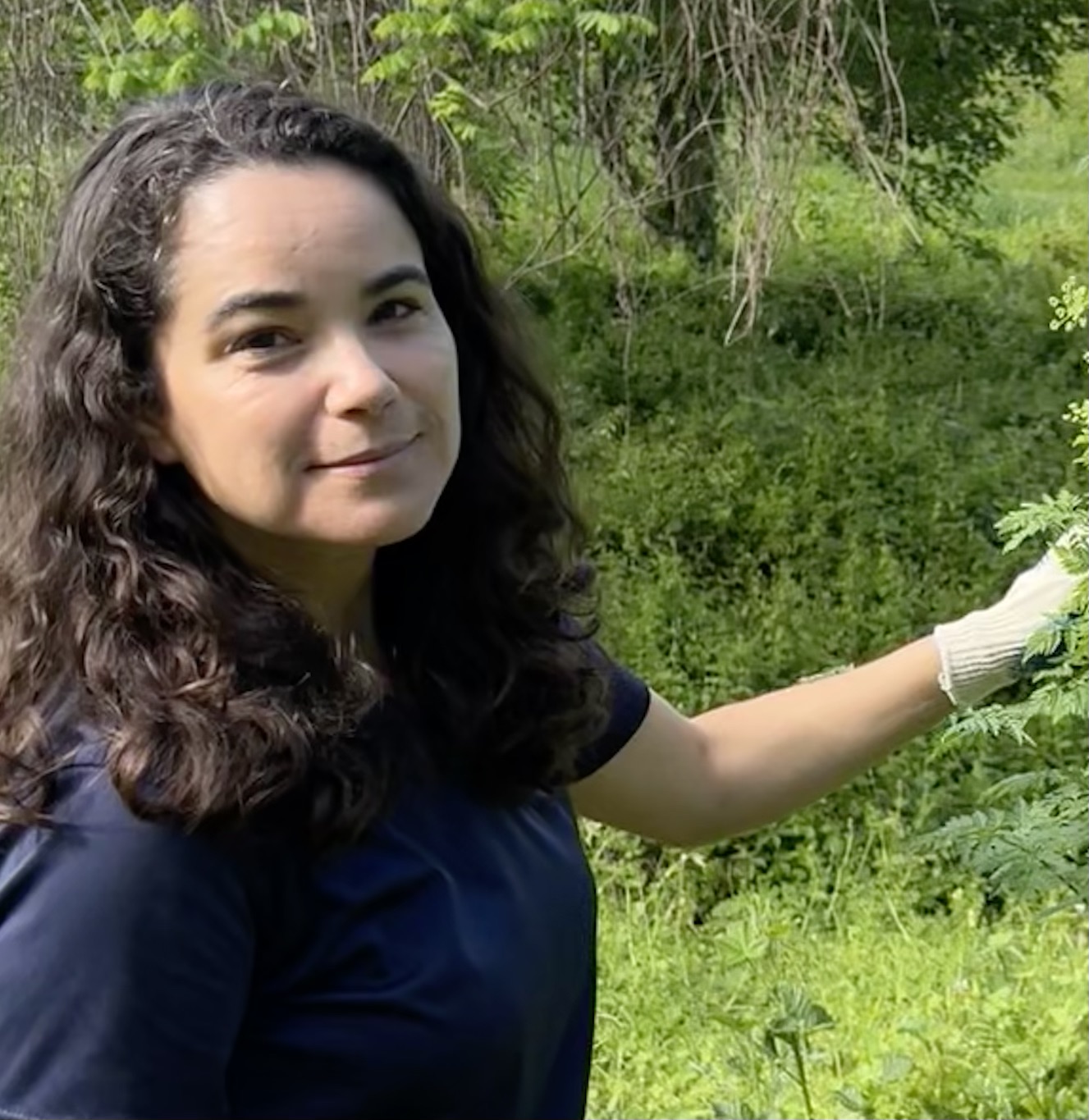If you were a famous Giant Panda celebrity, Bao Li or Qing Bao, newly in residence at the National Zoo, who would be your best friend in Fairfax County? That might be Patricia Greenberg, an ecologist and manager of the Park Authority’s newly formed Invasive Plant Management Program. As such, she is the person who could be described as having the keys to the bamboo kingdom, in charge of bamboo management and control.
Just as everyone knows Winnie the Pooh loves hunny, everyone knows the favorite food of adorable black and
 FCPA manager Patricia Greenberg is tasked with managing bamboo and other invasive plants on county property
FCPA manager Patricia Greenberg is tasked with managing bamboo and other invasive plants on county property
In Fairfax County, Greenberg’s job centers on knowing where bamboo is growing on public lands. The new section she manages was created after the county enacted its bamboo ordinance, which went into effect on Jan. 1, 2023. With about 25,000 of the 31,000 county-owned acres, the Park Authority has a big responsibility when it comes to bamboo management. They estimate bamboo encompasses at least 250 known acres, at 190 sites here.
Greenberg’s mission is to eliminate the fast growing, spreading plant from parkland; to comply with the bamboo ordinance. And, of course, to protect native trees and other plants which are out-competed by the invasive bamboo. Removal could take 15 years, at an estimated cost of $9.25 million. She is now engaged in mapping and prioritizing the patches for removal. She is ranking the sites to determine where to start the huge, multi-year effort. Patches are ranked on factors such as, accessibility, size of patch and plants; proximity to active homeowner treatment sites, or sensitive or rare resources, or other invasive management projects; and social-political factors. As patch evaluation efforts continue, contractors are beginning use of lethal methods to remove the plants at a handful of sites.
National Zoo Needs Fresh Bamboo
On the other side of the hate/love bamboo relationship, keepers at the Zoo are in need of a regular fresh bamboo source, and Fairfax County has a lot of the invasive plant material. As non-native plants, bamboo has a way of standing out against other plants in the landscape. Zoo employees noticed plants growing in a corner of Huntley Meadows Park, along the Dogue Creek in Alexandria. They sought, and were granted, a park use permit to harvest it. Cutting bamboo stalks from the approximately 1.5 acres, multiple times per week, helps to satisfy the appetites of their panda charges. Since other zoo animals enjoy the fibrous plant as well, the zoo’s use permit, good through the end of 2025, may help to nourish other zoo residents as well.
Greenberg says, “It’s a big help to us, getting the material removed from the site.” Her thoughts are echoed by FCPA executive director, Jai Cole, who adds, “As an ecologist by trade, I’m very interested in sustainable solutions to achieve positive outcomes for our environment. I’m excited for the potential that this relationship could have for helping us dispose of unwanted bamboo and providing essential nutrition for the ever-popular pandas at the National Zoo.”
There are many species of bamboo, and growing conditions are a factor in considering optimal sites for harvesting bamboo as panda food. FCPA planning director, Torsha Bhattacharya, hopes the pandas like the taste of our Fairfax County bamboo, seeing an opportunity to scale up the partnership. She calls it, “a two-for: we eradicate the bamboo and it becomes food for the pandas.”
Growing bamboo is not illegal in Fairfax County, but it must be controlled within an individual’s property. That control has proved a growing problem for homeowners, HOAs and faith communities. For a summary on dealing with running bamboo, see
Fairfax County Running Bamboo Ordinance
“-A bamboo owner must not allow running bamboo to spread from the bamboo owner’s property to any public right-of-way or any adjoining property not owned by the bamboo owner.
-A bamboo owner must contain the running bamboo to keep it from spreading onto any public right‑of‑way or adjoining property not owned by the bamboo owner.
-If a bamboo owner fails to comply with a Notice of Violation, each day that running bamboo remains un-contained may result in a civil penalty of $50, up to a maximum of $2,000 in a 12‑month period.”
